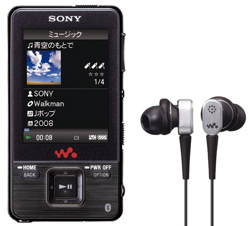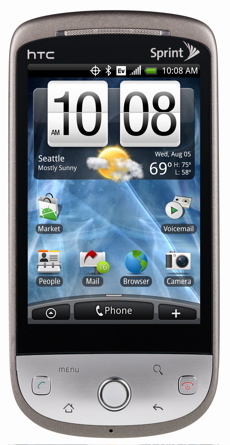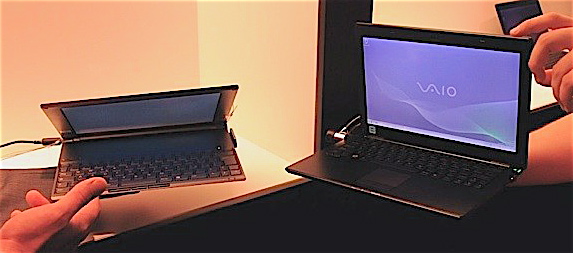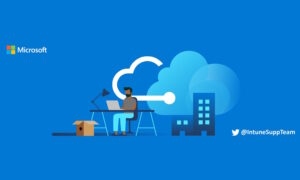
Kindle users get Amazon offer for returned deleted books, gift certificates
While the distributor of several e-books was wrong to assume that the "classic" nature of certain titles allowed them to be sold under the public domain license, there's been considerable concern over Amazon's right to "undo" the sale of those titles through its electronic Kindle Store. Last July, Amazon CEO Jeff Bezos issued a mea culpa, saying the unannounced deletion of various titles including George Orwell's 1984 was "stupid, thoughtless, and painfully out of line with our principles."
This morning, as first noted by Gizmodo's Rosa Golijan, individuals affected by Amazon's unannounced deletions are now receiving e-mails that appear to be from Amazon, offering customers the opportunity to the company to deliver legitimate copies of their books free of charge, or alternately to receive $30 gift certificates or refund checks from Amazon.

YouTube UK lifts blackout of 'premium' music videos
YouTube UK has lifted the six-month long "premium" music video blackout after arriving at a deal with the Performing Rights Society for Music over royalties.
The description of "premium" music videos included those that have been uploaded, or claimed as property, by record labels. The blackout only prohibited UK YouTube viewers from watching these videos, fan-uploaded copies were not included in the sanction.

How the updated Market in Android 1.6 will change everything
Google's App store for the Android mobile operating system is called the Android Market; for nearly a year, it's looked like a beta build. All of the critical elements are in place, but generally with a lack of presentability and polish. It uses a white-on-black color scheme (not good for reflective mobile phone screens); its application profiles lack screenshots, and it features user reviews a little too prominently to be beneficial to sales; the featured apps are little more than the application's logo on the top of the first page; and overall, its navigability is mediocre.
Developers who have recently made their sales figures public blame the Market's unfinished appearance on the overall sluggishness of sales when compared to the multi-million selling iTunes App Store. While I maintain that the two mobile app markets should not be compared (if only for the fact that the iTunes app store evolved out of the six-year old iTunes MP3 shop ecosystem, and all of its progenies have been designed to be mobile app stores from the ground up), Android Market definitely needed to be re-thought.

Appeals court stays Microsoft Word injunction
Late yesterday afternoon, as first reported by the Seattle P-I, the Federal Circuit Court of Appeals in Washington, DC issued a stay of last month's Texas District Court injunction against the sale of Microsoft Word in the US, about one month before that injunction might have taken effect.
The stay will give Microsoft time to formally appeal its case, after having filed papers there two weeks ago. In what some are calling a clear display of brinksmanship, the company is pulling out all the stops, demonstrating it may be willing to forego the usual settlement if it can set precedent. Since the founding of this country, inventors have been granted legally protected monopolies in the markets generated by their inventions; and the US, unlike almost any other country in the world, considers the first inventor -- not the first to patent an invention -- as the proper title-holder of a patent.

Toshiba's $249 Blu-ray player vs. $299 PS3: The choice is obvious
Just about a month ago, Toshiba confirmed it had applied for membership in the Blu-ray Disc Association, and announced its intention to launch both standalone Blu-ray players and BD-equipped notebooks this year.
Today, the company that was formerly responsible for Blu-ray's sole opposition in the high definition disc market unveiled the first details about its Blu-ray hardware.

Google gives the floor to advocates of its controversial book deal
Google reached a settlement last October with the Author's Guild, the Association of American Publishers, and several independent authors that filed a class action suit against it three years ago. Once this agreement is approved, Google will be able to greatly increase the number of books that can be searched, previewed and purchased in Google Books. There are currently some seven million books available.
"We hope and expect that this leap forward with our friends and partners in the publishing industry is just the first of many. We love books at Google, and our fondest dream is that Book Search will evolve into a service that ensures that books, along with their authors and publishers, will flourish for many years into the future," Google said in an announcement earlier this week.

Cloudy forecast? Gmail outage shouldn't cast such a chill over Web apps
Will this week's Google Mail outage frighten you out of shifting more of your computing solutions into the cloud?
On balance, it shouldn't, as no technology is perfect and failure is part of the landscape whether we keep our stuff in a data center, in a box under our desk, or on some unseen Web server on the other side of the country. But any failure of this magnitude offers up a prime opportunity to discuss -- and hopefully improve -- the weaknesses that can still bite us.

Diebold finally rids itself of electronic voting business
If you ask Diebold, there is a such thing as bad press. For years, the company has endured brand-eroding criticism about its electronic voting machines, and earlier this year in a hearing, publicly admitted they had serious design flaws.
Now, the company can finally move on from its e-voting debacles, as it sold the business unit to competitor Election Systems & Software, Inc. for a mere $5 million.

iPod beaten in Japan by 30-year-old line of music players
The iPod may be the reigning king of media players, but in Japan, the old king has managed to take back the throne.
Japanese market research company BCN Inc. reports that Sony's Walkman digital music player has outsold Apple's iPod in Japan, according to a Bloomberg report today.

MMS comes to iPhones on September 25
AT&T today said that just a few days after Summer ends, the iPhone will finally get the ability to send and receive MMS messages.
The company has said that the functionality will be enabled with a software update downloadable through iTunes, and will only be available on iPhone 3G and 3GS models.

Labor day nears, MMS and Tethering for iPhone still absent
iPhone 3GS users have grown increasingly agitated that they still do not have MMS functionality and the ability to tether their phone to their laptop as a 3G modem despite the fact that these abilities were expected to arrive "at the end of the summer."
Yesterday, New York Times reporter Jenna Wortham called the iPhone "the Hummer of cellphones," burning through bandwidth like the oversized SUVs burn through gasoline. Because of this, AT&T has gotten a reputation for being an inadequate network. Nearly one third of potential iPhone owners are passing on the popular device because they don't want to deal with AT&T. The public has placed the blame for lack of MMS and tethering squarely on the mobile network operator.

Sprint announces its first Android device
The highly desirable HTC Hero which was unveiled earlier this summer for will become Sprint's first Android phone on October 11. Not only has the device been re-tooled with an EV-DO rev. A radio for Sprint's 3G network (the world version is WCDMA,) but it has also received a total chassis overhaul.
But looking at the two versions side-by-side, the physical design has been almost completely rethought. Where the HTC Hero was slim and angular, with the now-trademark "chin" cropping up from the device's tail end, the Sprint Hero has been rounded out and flattened. It actually ends up looking more like T-Mobile's myTouch 3G more than the original Hero.

YouTube may start renting movies, and the MPAA may finally approve
The Wall Street Journal is reporting this evening the internet's most popular video streaming destination YouTube is now in talks with movie studios to offer rental streams of new release movies which could potentially be released day and date with their DVD and Blu-ray counterparts.
The site already works with a number of content owners to host ad-sponsored streams of classic television shows and films, but the site has not yet attempted the rental model with these studios. Details are scant at this point, at the WSJ only cites information provided by unnamed sources "familiar with [YouTube's] plans." A $3.99 rental price is reportedly being discussed because that is the cost of a Standard Definition new release movie rental on Apple's iTunes and Amazon Video on Demand.

How thin is too thin for a notebook?
I don't know about you, but my view of razor-thin notebooks has been permanently changed by MSI, thanks to a creative (and supremely twisted) viral advertisement that began circulating earlier this month. Because of this, my colleagues and I jokingly refer to this as-of-yet unclassified style of ultraportable as "cracktops."
Of course, within the industry, what I would refer to as a "cracktop" seems to be increasingly falling into "category X." Both Lenovo and MSI call their ultra slim portable lines the "X-series," and Sony today unveiled the Vaio X, which would fit right in among the others. (UPDATE: Samsung has just revealed its own slim notebook, also to be called the X series.)

Take-Two's in-game sex scandal, and real-life backdating scandal resolved to the tune of $20 million
As Rockstar Games and Take Two Interactive's Grand Theft Auto series continues to move ahead with releases of Chinatown Wars for the iPhone, and GTA IV: The Ballad of Gay Tony expansion pack for Xbox 360 on the horizon, the controversy from 2004's Grand Theft Auto: San Andreas has only just now cooled down.
In a statement from Take-Two yesterday, the company said it will settle the class action suit over the unlockable sex scenes in GTA: San Andreas, and the "historical stock option granting practices" suit which brought the company before the Securities and Exchange Commission earlier this year.



